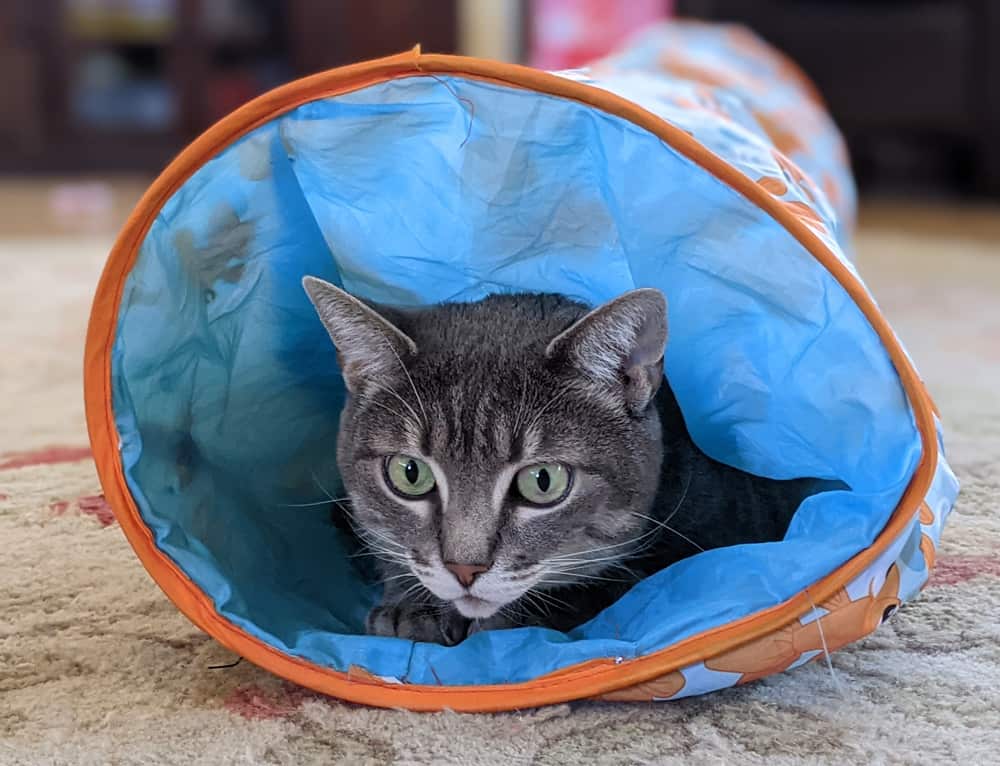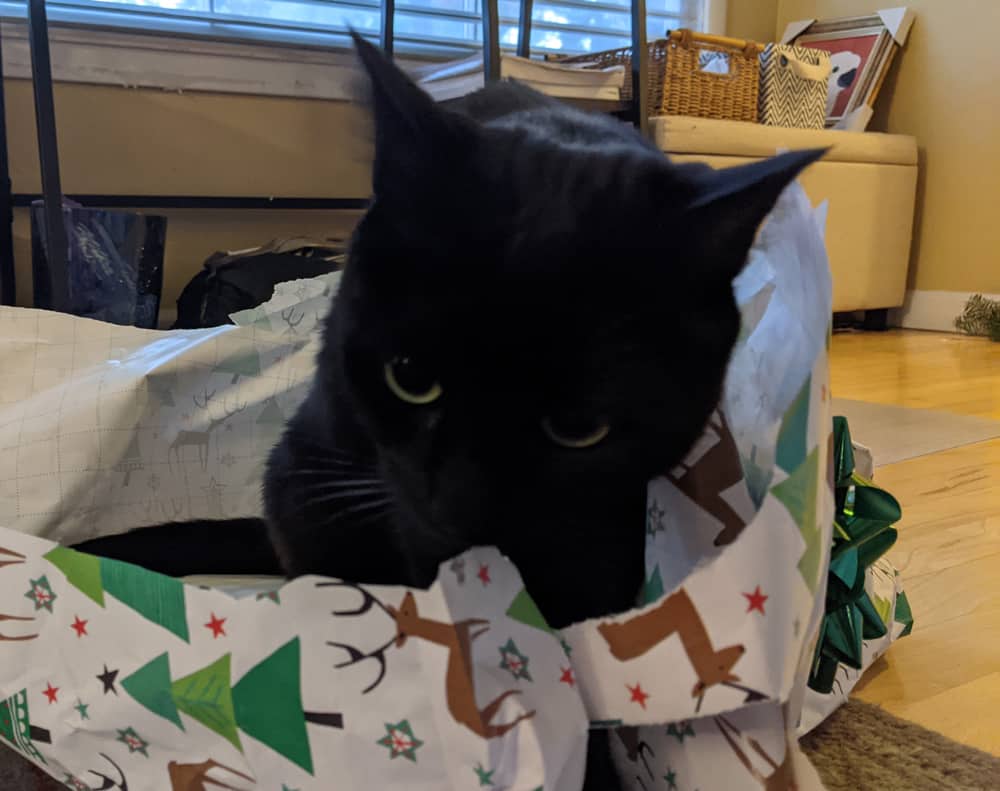When we get an especially big cardboard box delivered, one of the joys for my cats is to go crashing through the packing paper. The same goes for diving through their cat tunnel and batting around a crinkly cat toy.
Paper grocery bags, wrapping paper, crinkly tunnels, and noisy toys are all things that are attractive to your cat.
So why do cats love to play with things that make a crinkly sound?
Cats are Curious
Anything new that isn’t too loud or scary looking will stimulate your cat’s inquisitive nature.
So when you bring home groceries in paper bags or scatter the packing material on your living room floor, it’s second nature for your cat to come explore.

Appealing to Your Cat’s Predatory Nature
Cats use sound as part of their hunting strategy. The crinkly sound can mimic sounds that prey might produce such as moving over dried leaves in a forest. You might see your cat crouch down and flick their tail back and forth in response to hearing the sound of something crinkly before launching themselves at the item. (Related: Match Your Cat’s Toys to Their Prey Preference)
A small toy that crinkles lets your cat engage their auditory senses when playing.
One of my cats loves to pounce on a small crinkly toy in the form of a tea bag. The small toy is easy for her to pick up and toss and she loves to hear the crinkly sounds when your cat bites or bats at it.

Cats can hearing high-pitch sounds that humans can’t, like the high-pitched squeak of a mouse. Cats can typically hear frequencies in the 65 – 70 kHz range which is useful for hunting. By comparison, humans can hear up to 15 – 20 kHz. The crinkling sound produce by a crinkly toy or paper can mimic those ultrasonic sounds.
Sensory Experience for Cats
For many cats, diving into paper and hearing it crinkle is a wonderful sensory experience. When I bring out the wrapping paper, one of my cats dives right in.

Avoid Aluminum Foil
While you cat may have an excited reaction to you crushing a sheet of aluminum foil into a ball and chase after it, you should avoid this potentially hazardous item. During play, your cat may tear off pieces of the foil and ingest them. Tin foil is not digestible and can create an internal blockage.
Crinkle Sounds Can Cause Seizures in Some Older Cats
Another lesser known danger is that some older cats can experience seizures when listening to the high pitched sound created by foil. Researchers from Davies Veterinary Specialists and the UCL School of Pharmacy, London found that some older cats certain sounds will induce feline audiogenic reflex seizures (FARS).
In analyzing the response of 96 cats, the sound of tin foil was the most common sound that induced seizures (82 cats). Other sounds included the a metal spoon clanging in a ceramic feeding bowl (79 cats), chinking or tapping of glass (72 cats), crinkling of paper or plastic bags (71 cats), tapping on a computer keyboard or clicking of a mouse (61), clinking of coins or keys (59), hammering of a nail (38), and the clicking of an owner’s tongue (24).






